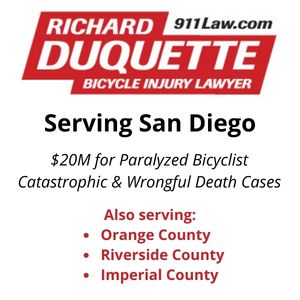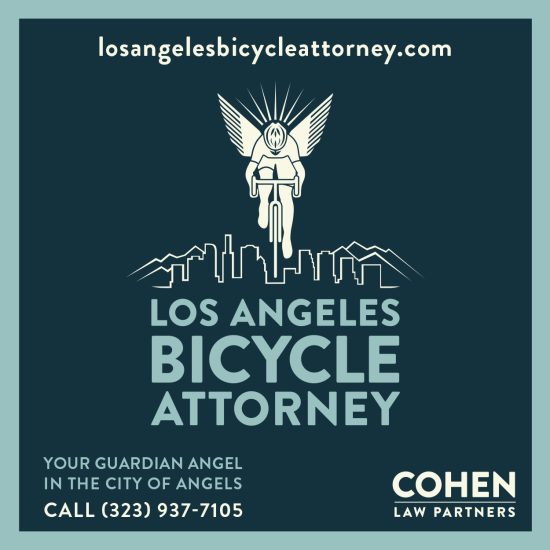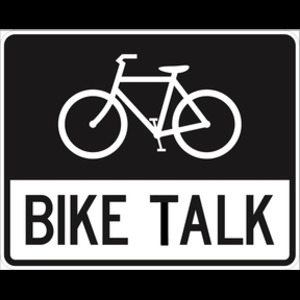You’ll have to excuse me.
I’d planned on a post offering my thoughts on yesterday’s third CicLAvia — not the third year, as many press outlets have mistakenly reported — as well as Saturday’s Tour de Fat.
But here’s the Cliff Notes version: Major mondo fun for all.
As usual, CicLAvia offered a wonderful opportunity to experience the city car-free, and the added spur onto Central Avenue was inspired; I’d love to see it go further into L.A. biking’s undiscovered country. And the many admonitions to slow down seemed to result in a safer and more enjoyable event.
Hap Dougherty offers his usual great photos, as does Streetsblog’s Damien Newton; while the Times offers a good write-up. And KABC-7 tells the story well, as well. (Update: forgot to mention that the next CicLAvia will take place April 15, 2012, with another scheduled for next October; earlier I somehow mistakenly wrote April 4 even though I knew better, thanks to westculvermonicaside for the catch.)
Having learned from the past, I didn’t even bother taking my camera this year. So many people take so much better photos of the event that my meagre camera jockey efforts are wasted in comparison.
And even my non-biking wife and dog had a great time at Tour de Fat, though the latter seems to enjoy any event in which Santa Monica Spoke’s Cynthia Rose rubs her belly.
Then again, my wife might enjoy it too, given the opportunity.
Unfortunately, the even was marred for many when a cyclist was hit by a car in front of Nick’s Cafe on Alameda Street just outside Tour de Fat.
Harv Woien initially gave me the heads-up later that night. Somehow I missed it, apparently passing through that same spot just moments before the collision. Twitterers @Revolbike and @GraphikDeziner added what they knew about it.
Meanwhile, @fts_acer sent a detailed, first-person account of wrenching effects of witnessing the wreck.
Gotta start off by saying I didn’t witness the accident per se, but I was standing literally on the corner of the intersection where it happened, on the patio at Nick’s Cafe across the street from LA Historic Park, facing the other way and heard an obvious (very loud) collision behind me, and immediately turned around to see a cyclist tumbling off the front right fender of a Ford Expedition, his bike literally coming to pieces under the SUV’s tires.
The loud noises were a combination of the SUV’s body work (front right lower bumper and passenger side door) getting dented in, the SUV’s right side view mirror getting broken, and the bike being crushed under the car, completely demolished. Most visually stunning was the Aerospoke broken to bits and the disembodied tire/tube flailing about as the cyclist came to rest next to the car.
Notably, there were no screeching tires involved. For the record, I used to work for BMW as a test driver and I am very familiar with the sound of tires whining under the stress of anti-lock brakes as well, and that sound was also absent, implying the driver was either not at all on the brakes leading up to the collision, or wasn’t on them very hard.
The driver stopped, thank heaven, staying in the car, perhaps in shock, a young woman with a few passengers in there. The rider was conscious and moving as we ran over, he was rolling onto his back and took off his messenger bag. No blood, outwardly didn’t look like any broken bones or anything, but he was definitely mentally out of it, tried to stand up and fell back down. Noticed he wasn’t wearing a helmet.
Luckily there were two police officers already stationed at the same intersection to watch over the event, so they were running up the same time we were. A couple friends and I tried to lend a hand, but the police shooed us away so we stood and watched from a few feet back. Medics were called.
The guy started talking to the police, who cleared the scene of onlookers and diverted traffic, using their squad cars to block off part of the road. The driver got out of the car and said the rider “scared the shit” out of her. The rider said she “scared the shit” out of him, too. In other words, one or both of them were obviously not paying attention.
Frankly, it scared the shit out of dozens of cyclists who rode by, visibly mortified just by the aftermath of what happened. I think most cyclists get that feeling when they see or hear that a cyclist and a car got into it.
No witnesses stepped forward, there were just about ten of us that heard the crash and ran to see if we could help.
My friend who was there with me says he knows that stretch of Spring is well-known for speeding, that drivers are typically very careless through that area. I suppose that’s hearsay, but who knows how fast that SUV was going before the collision. IMHO, under the conditions, with so many bikes and pedestrians obviously attending an event at the park, nothing about 25mph would have been safe. But that’s just my opinion, I suppose.
Anyway, this all amounts to little more than an excessively detailed anecdote but hopefully it helps. I hope the rider will be okay.
The police at the scene were not interested in talking to us, only in securing the scene, but I wouldn’t mind trying to give them a statement for what it’s worth, would you happen to have any idea how I would go about that? What division it might be, etc?
I directed Acer to the LAPD’s Central Traffic Division, as well as the department’s bike liaison Sgt. David Krumer.
I agree with his suggestion that speed limits should be temporarily lowered on streets next to major events like that. And I second his hopes that the rider is okay; if anyone has word on his condition, send us the (hopefully) good news.
……..
Now if you’ll excuse me, I have a major bike hangover this morning, with symptoms ranging from rubber legs to an overwhelming desire for sleep. And I’ve got an important work assignment due by morning that I should be working on right now.
Then again, all work assignments are important, right?
Before I go, though, a couple of great links.
First up, Russ and Laura, the Long Beach biking expats behind the must-read The Path Less Pedaled — who I had the pleasure of meeting over the weekend — are offering one last SoCal presentation Tuesday night in El Segundo before they once again hit the road. I can’t make it, but I’d strongly recommend attending if you can.
I’ve got an LACBC Planning Committee meetings to chair that same night; 7 pm Tuesday at Downtown’s Pitfire Pizza at 2nd and Main. We’ll be talking about what programs, plans and legislations you’d like to see implemented as we move forward, whether on a local, county or state level. So we’d love to have you join us if you can tear yourself away from Russ and Laura.
And finally, the BBC offers a great look at the non-existent war between cyclists and drivers — including this wonderful quote:
“When we make improvements for bicyclists, often the biggest beneficiary are people who drive motor vehicles.” — Mark LearBureau of transportation traffic safety program manager, Portland, Oregon
Definitely worth the click; thanks to L.A. Streetsblog for the link.





















